Characteristics of Viscoelastic-Surfactant-Induced Wettability Alteration in Porous Media
Abstract
:1. Introduction
2. Theory
- Step 1. Core sample 100% saturated (aged) with brine (or aqueous phase);
- Step 2. Centrifugal oil displacing brine (or aqueous phase);
- Step 3. Spontaneous imbibition of brine (or aqueous phase) in water imbibition meter;
- Step 4. Centrifugal brine (or aqueous phase) displacing oil;
- Step 5. Spontaneous imbibition of oil in oil imbibition meter;
- Step 6. Centrifugal oil displacing brine (or aqueous phase).
3. Experimental Section
3.1. Original Oil–Water Distribution
3.2. Experimental Procedure and Equipment
3.2.1. Effect of Injection Flow Rate
3.2.2. Imbibition Meters
3.2.3. Equipment for Forced Displacing
3.3. Combined Amott/USBM Test
3.3.1. Neutral Wetting Core Preparation
3.3.2. Initial Wettability-Index Measurement before VES Filtration
3.3.3. Core Aging Procedures after VES Filtration
- Static aging
- Dynamic aging
3.3.4. Wettability-Index Measurements after VES Filtration
4. Results and Discussion
4.1. Effect of Aging Mode and Aging Time
4.1.1. Static Aging
4.1.2. Dynamic Aging
4.2. Effect of VES Concentration
4.3. Effect of VES Flow Rate
4.4. Effect of Pore Radius
5. Conclusions
Author Contributions
Funding
Institutional Review Board Statement
Informed Consent Statement
Data Availability Statement
Conflicts of Interest
References
- Yadali Jamaloei, B.; Kharrat, R.; Asghari, K.; Torabi, F. The influence of pore wettability on the microstructure of residual oil in surfactant-enhanced water flooding in heavy oil reservoirs: Implications for pore-scale flow characterization. J. Pet. Sci. Eng. 2011, 77, 121–134. [Google Scholar] [CrossRef]
- Salehi, M.; Johnson, S.J.; Liang, J.T. Mechanistic study of wettability alteration using surfactants with applications in naturally fractured reservoirs. Langmuir 2008, 24, 14099–14107. [Google Scholar] [CrossRef]
- León-Pabón, J.-A.; Mejía-Pilonieta, T.-J.; Carrillo-Moreno, L.-F.; Buendía-Lombana, H.; Zapata, J.-F.; Díaz-Prada, C.-A. Experimental Comparison for the Calculation of Rock Wettability Using the Amott-Harvey Method and a New Visual Method. J. Oil Gas Altern. Energy Sources 2014, 5, 5–22. [Google Scholar] [CrossRef] [Green Version]
- Luo, P.; Li, S.; Knorr, K.D.; Nakutnyy, P. Underlying mechanisms of tight reservoir wettability and its alteration. In Proceedings of the Proceedings—SPE Symposium on Improved Oil Recovery, Tulsa, OK, USA, 14–18 April 2018. SPE-190214-MS. [Google Scholar]
- Anderson, W.G. Wettability Literature Survey—Part 2: Wettability Measurement. J. Pet. Technol. 1986, 38, 1246–1262. [Google Scholar] [CrossRef]
- Castillo, S.C.; Fjelde, I. Water and Surfactant Flooding at Differnet Wettability Conditions; University of Stavanger: Stavanger, Norway, 2011. [Google Scholar]
- Mandal, A.; Kar, S.; Kumar, S. The Synergistic Effect of a Mixed Surfactant (Tween 80 and SDBS) on Wettability Alteration of the Oil Wet Quartz Surface. J. Dispers. Sci. Technol. 2016, 37, 1268–1276. [Google Scholar] [CrossRef]
- Yi, H.; Zhang, X.; Liu, Y.; Song, S. AFM study on the wettability of mica and graphite modified with surfactant DTAB. J. Dispers. Sci. Technol. 2018, 39, 1060–1064. [Google Scholar] [CrossRef]
- Jiang, R.; Li, K.; Horne, R. A mechanism study of wettability and interfacial tension for EOR using silica nanoparticles. In Proceedings of the Proceedings—SPE Annual Technical Conference and Exhibition, San Antonio, TX, USA, 11 October 2017. SPE-187096-MS. [Google Scholar]
- Li, X.; Fan, X.; Brandani, S. Difference in pore contact angle and the contact angle measured on a flat surface and in an open space. Chem. Eng. Sci. 2014, 117, 137–145. [Google Scholar] [CrossRef]
- Elmofty, O. Surfactant Enhanced Oil Recovery by Wettability Alteration in Sandstone Reservoirs; Missouri Universigy of Science and Technology: Rolla, MO, USA, 2012. [Google Scholar]
- Bobek, J.E.; Mattax, C.C.; Denekas, M.O. Reservoir Rock Wettabiliity—Its Significance and Evaluation. J. Pet. Technol. 1958, 213, 155–160. [Google Scholar]
- Julius, P.; Ananthanarayanan, P.N.; Anbazhagan, G. Analysis on capillary pressure curves by wettability modification through surfactants. Indian J. Sci. Technol. 2015, 8, 2–5. [Google Scholar] [CrossRef] [Green Version]
- Fernø, M.A.; Torsvik, M.; Haugland, S.; Graue, A. Dynamic laboratory wettability alteration. Energy Fuels 2010, 24, 3950–3958. [Google Scholar] [CrossRef]
- Hou, B.F.; Wang, Y.F.; Huang, Y. Mechanistic study of wettability alteration of oil-wet sandstone surface using different surfactants. Appl. Surf. Sci. 2015, 330, 56–64. [Google Scholar] [CrossRef]
- Aspenes, E.; Graue, A.; Ramsdal, J. In situ wettability distribution and wetting stability in outcrop chalk aged in crude oil. J. Pet. Sci. Eng. 2003, 39, 337–350. [Google Scholar] [CrossRef]
- Wu, K.; Chen, Z.; Li, J.; Li, X.; Xu, J.; Dong, X. Wettability effect on nanoconfined water flow. In Proceedings of the National Academy of Sciences of the United States of America, Cambridge, MA, USA, 15 February 2017; Volume 114, pp. 3358–3363. [Google Scholar]
- Karimi, A.; Fakhroueian, Z.; Bahramian, A.; Pour Khiabani, N.; Darabad, J.B.; Azin, R.; Arya, S. Wettability alteration in carbonates using zirconium oxide nanofluids: EOR implications. Energy Fuels 2012, 26, 1028–1036. [Google Scholar] [CrossRef]
- Hou, B.; Jia, R.; Fu, M.; Wang, Y.; Bai, Y.; Huang, Y. Wettability Alteration of an Oil-Wet Sandstone Surface by Synergistic Adsorption/Desorption of Cationic/Nonionic Surfactant Mixtures. Energy Fuels 2018, 32, 12462–12468. [Google Scholar] [CrossRef]
- Das, S.; Nguyen, Q.; Patil, P.D.; Yu, W.; Bonnecaze, R.T. Wettability Alteration of Calcite by Nonionic Surfactants. Langmuir 2018, 34, 10650–10658. [Google Scholar] [CrossRef] [PubMed]
- Morrow, J.R. Wettability and Its Effect on Oil Recovery. J. Pet. Technol. 1990, 67, 1476–1484. [Google Scholar] [CrossRef]
- Bulgakova, G.T.; Kharisov, R.Y.; Pestrikov, A.V.; Sharifullin, A.R. Experimental study of a viscoelastic surfactant-based in situ self-diverting acid system: Results and interpretation. Energy Fuels 2014, 28, 1674–1685. [Google Scholar] [CrossRef]
- Siggel, L.; Santa, M.; Hansch, M.; Nowak, M.; Ranft, M.; Weiss, H.; Hajnal, D.; Schreiner, E.; Oetter, G.; Tinsley, J. A new class of viscoelastic surfactants for enhanced oil recovery. In Proceedings of the SPE—DOE Improved Oil Recovery Symposium Proceedings, Tulsa, OK, USA, 14–18 April 2012; pp. 1–9. [Google Scholar]
- Li, K.X.; Jing, X.Q.; He, S.; Ren, H.; Wei, B. Laboratory Study Displacement Efficiency of Viscoelastic Surfactant Solution in Enhanced Oil Recovery. Energy Fuels 2016, 30, 4467–4474. [Google Scholar] [CrossRef]
- Van Santvoort, J.; Golombok, M. Improved Oil Reservoir Sweep with Viscoelastic Surfactants. Energy Fuels 2016, 30, 9226–9232. [Google Scholar] [CrossRef]
- van Santvoort, J.; Golombok, M. Viscoelastic surfactants for diversion control in oil recovery. J. Pet. Sci. Eng. 2015, 135, 671–677. [Google Scholar] [CrossRef]
- Adejare, O.O.; Nasralla, R.A.; Nasr-Ei-Din, H.A. A procedure for measuring contact angles when surfactants reduce the interfacial tension and cause oil droplets to spread. SPE Res. Eval. Eng. 2014, 17, 365–372. [Google Scholar] [CrossRef]
- Li, K.; Jing, X.; He, S.; Wei, B. Static Adsorption and Retention of Viscoelastic Surfactant in Porous Media: EOR Implication. Energy Fuels 2016, 30, 9089–9096. [Google Scholar] [CrossRef]
- Donaldson, E.C.; Thomas, R.D.; Lorenz, P.B. Wettability Determination and Its Effect on Recovery Efficiency. SPE J. 1969, 9, 13–20. [Google Scholar] [CrossRef]
- Sharma, M.M.; Wunderlich, R.W. The alteration of rock properties due to interactions with drilling fluid components. J. Pet. Sci. Eng. 1987, 1, 127–143. [Google Scholar] [CrossRef]
- Torsaeter, O. A Comparative study of wettability test methods based on experimental results from North Sea Reservoir Rocks. In Proceedings of the 63rd Annual Technical Conference and Exhibition of the Society of Petroleum Engineers, Houston, TX, USA, 2–5 October 1988; pp. 199–207, SPE 18281. [Google Scholar]
- Rehage, H.; Hoffmann, H. Viscoelastic Surfactant Micelle Systems and Their Rheological Properties. Oilf. Chem. 2003, 20, 291–294. [Google Scholar]
- Srisutthiyakorn, N.; Mavko, G. The revised Kozeny-Carman equation: A practical way to improve permeability prediction in the Kozeny-Carman equation through pore-size distribution. In Proceedings of the SEG International Exposition and 87th Annual Meeting, Houston, TX, USA, 23 October 2017; pp. 3811–3815. [Google Scholar]
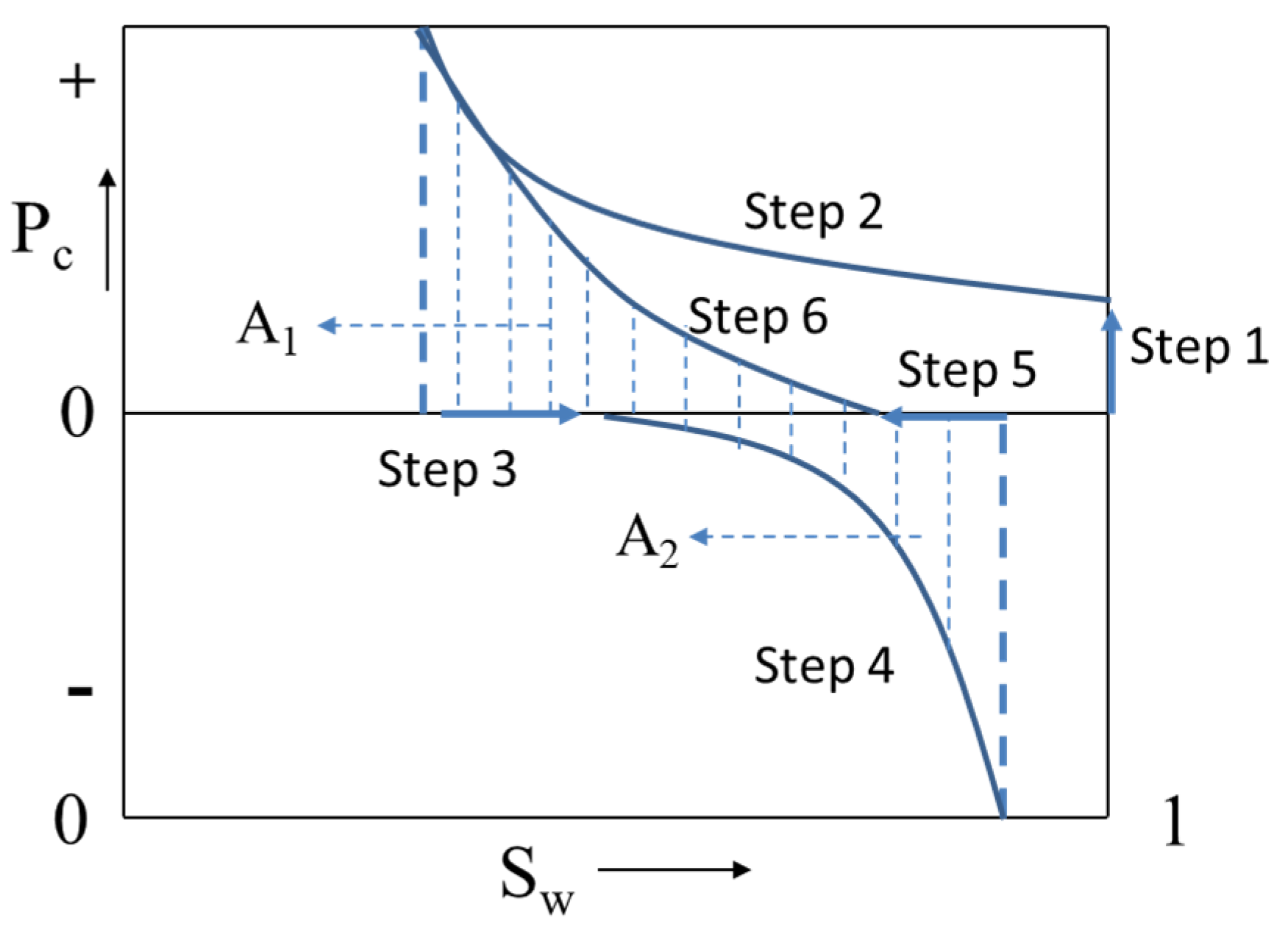

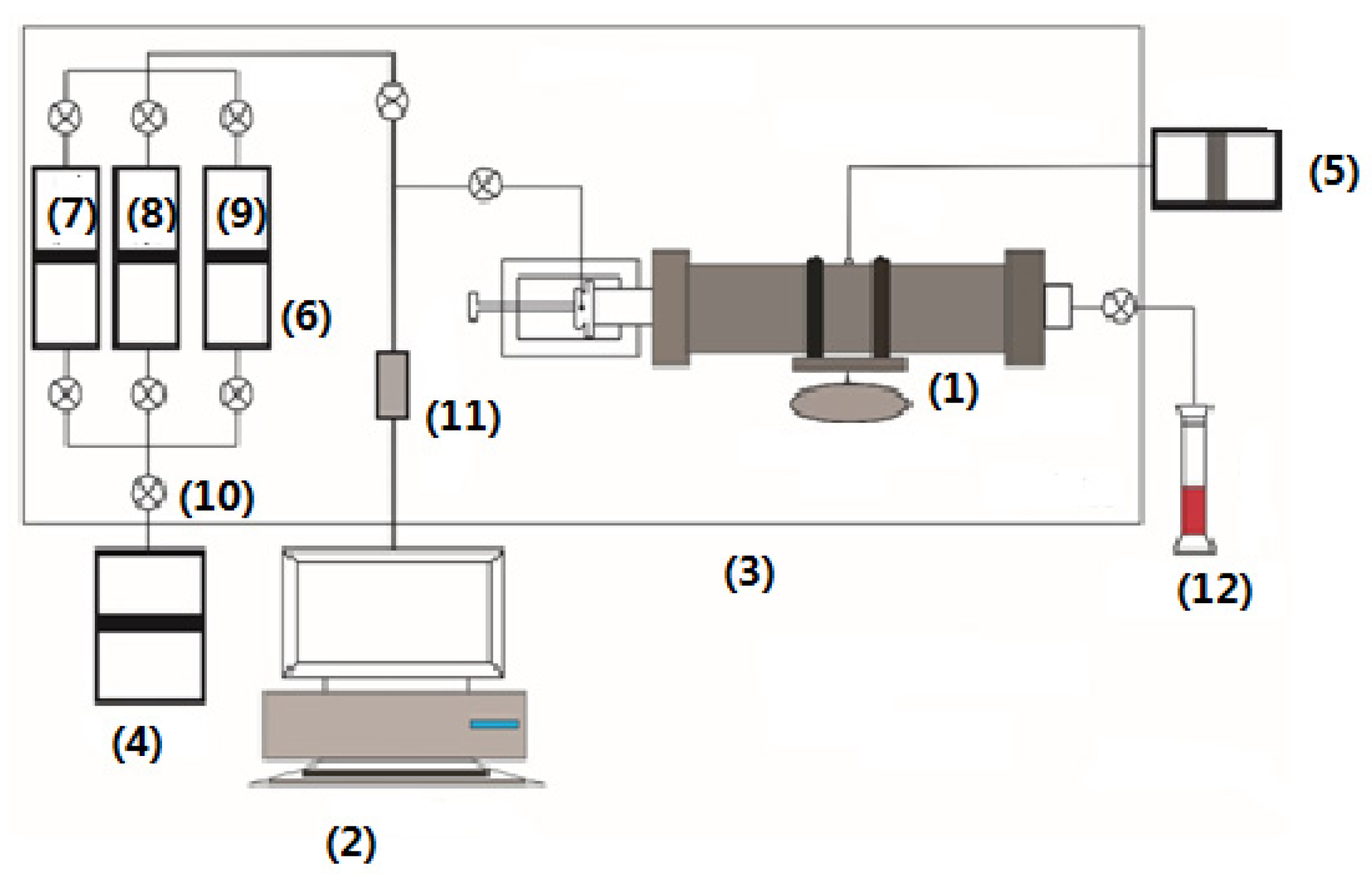

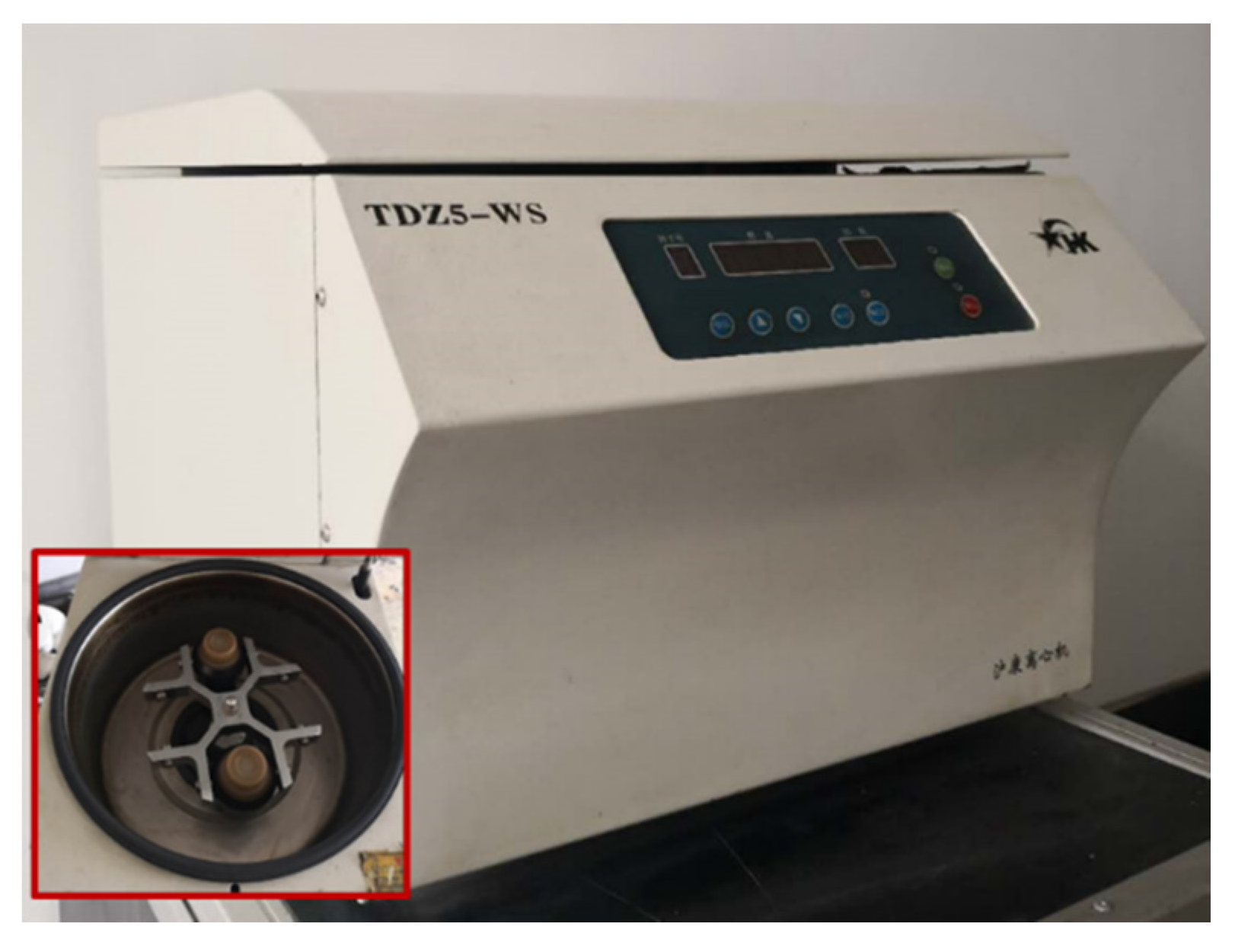
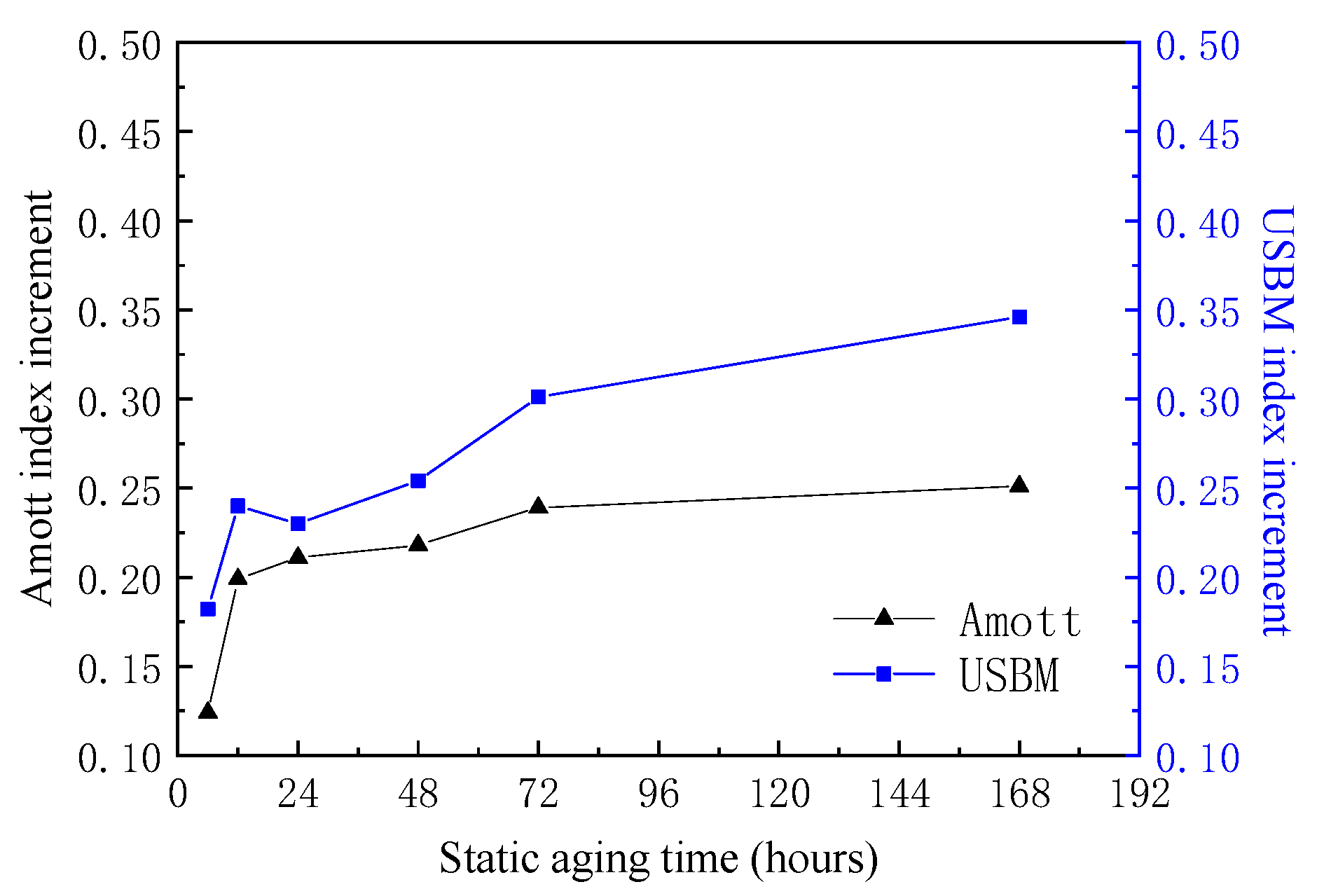
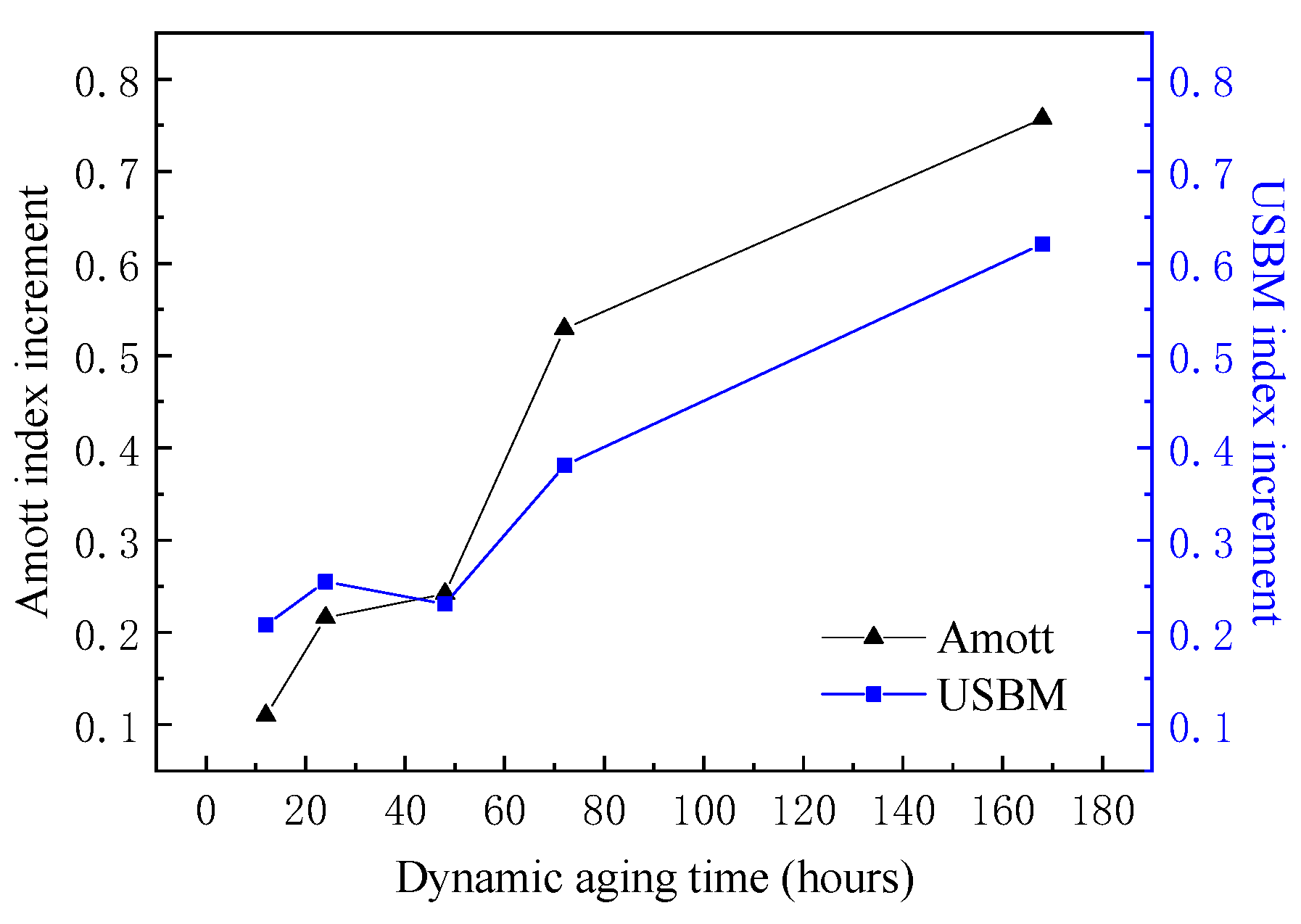


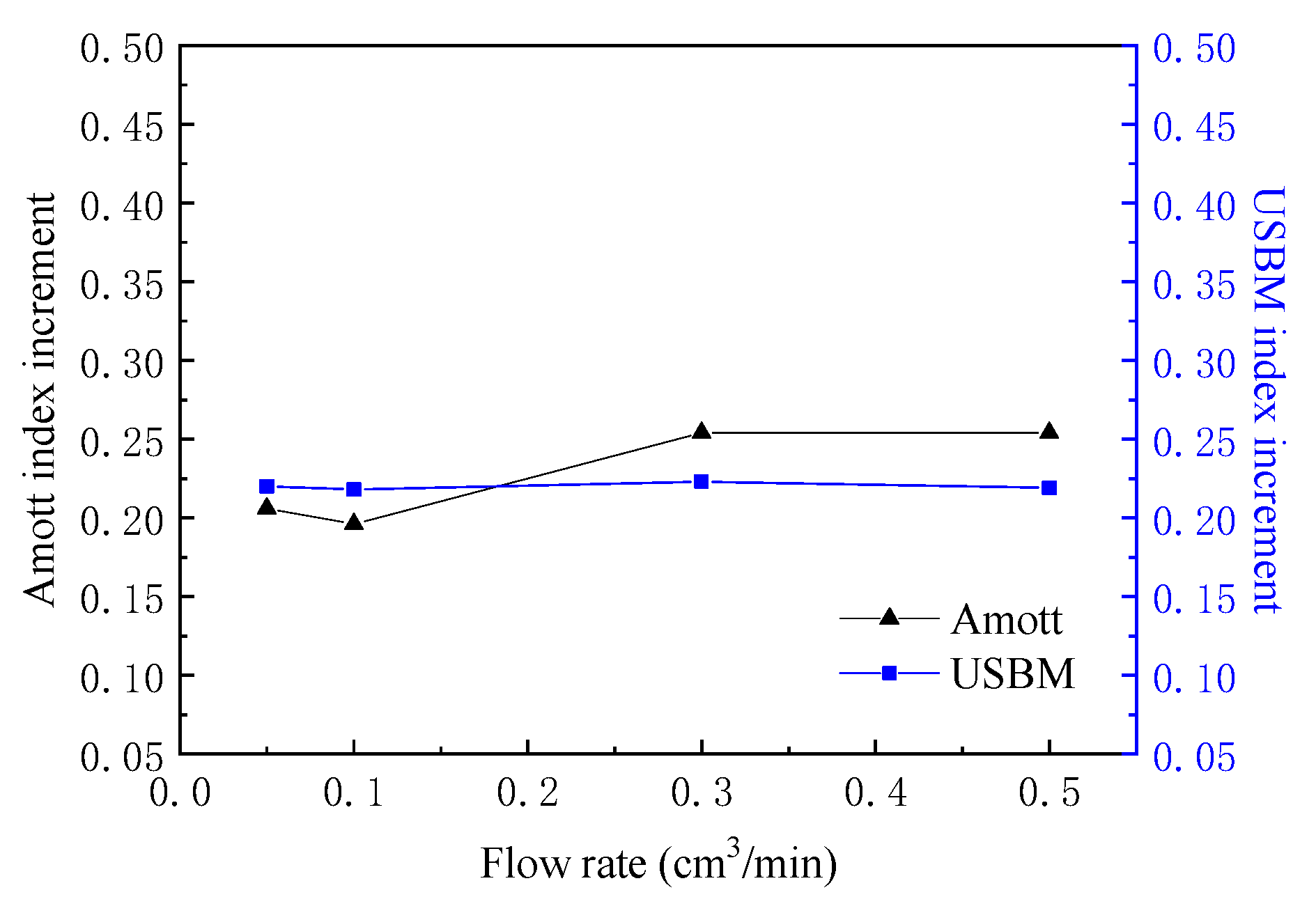

| Core Wettability | Strong Lipophilic | Lipophilic | Neutral Wet | Hydrophilic | Strong Hydrophilic | ||
|---|---|---|---|---|---|---|---|
| Weak Lipophilic | Neutral | Weak Hydrophilic | |||||
| Amott | (−1.0, 0.7) | (−0.7, −0.3) | (−0.3, −0.1) | (−0.1, 0.1) | (0.1, 0.3) | (0.3, 0.7) | (0.7, 1.0) |
| USBM | Negative value | 0 or close to 0 | Positive value | ||||
| Core No. | Length (cm) | Diameter (cm) | Permeability (mD) | Porosity (%) | Aging Time (h) | Initial Wettability | VES Filtration | ||
|---|---|---|---|---|---|---|---|---|---|
| IB | WB | IV | WV | ||||||
| 100-20 | 7.06 | 2.54 | 100 | 16.37 | 6 | 0.032 | −0.046 | 0.156 | 0.136 |
| 100-15 | 6.99 | 2.54 | 103 | 17.34 | 12 | 0.017 | −0.022 | 0.216 | 0.218 |
| 100-8 | 7.02 | 2.55 | 102 | 16.34 | 24 | 0.044 | 0.026 | 0.255 | 0.256 |
| 100-6 | 7.04 | 2.55 | 99 | 16.19 | 48 | 0.050 | 0.051 | 0.268 | 0.305 |
| 100-5 | 6.98 | 2.55 | 98 | 17.10 | 72 | 0.039 | −0.012 | 0.278 | 0.289 |
| 100-3 | 7.04 | 2.55 | 101 | 18.39 | 168 | 0.035 | −0.047 | 0.286 | 0.299 |
| Core No. | Length (cm) | Diameter (cm) | Permeability (mD) | Porosity (%) | Dynamic Aging Time (h) | Initial Wettability | VES Filtration | ||
|---|---|---|---|---|---|---|---|---|---|
| IB | WB | IV | WV | ||||||
| 100-66 | 7.05 | 2.55 | 98 | 16.16 | 12 | 0.015 | −0.036 | 0.125 | 0.172 |
| 100-67 | 7.03 | 2.52 | 96 | 16.99 | 24 | −0.050 | −0.051 | 0.166 | 0.204 |
| 100-65 | 7.02 | 2.54 | 101 | 16.58 | 48 | 0.016 | −0.010 | 0.258 | 0.221 |
| 100-68 | 7.01 | 2.54 | 102 | 15.99 | 72 | 0.058 | 0.061 | 0.587 | 0.442 |
| 100-69 | 6.99 | 2.55 | 95 | 16.12 | 168 | −0.056 | −0.065 | 0.701 | 0.556 |
| Core. No. | Length (cm) | Diameter (cm) | Permeability (mD) | Porosity (%) | Concentration (mg/L) | Initial Wettability | VES Filtration | ||
|---|---|---|---|---|---|---|---|---|---|
| IB | WB | IV | WV | ||||||
| 100-31 | 7.03 | 2.55 | 96 | 16.15 | 100 | −0.028 | −0.015 | 0.043 | 0.036 |
| 100-32 | 6.99 | 2.55 | 95 | 16.01 | 1000 | −0.032 | −0.028 | 0.056 | 0.052 |
| 100-33 | 7.01 | 2.55 | 102 | 16.56 | 3000 | −0.056 | −0.061 | 0.036 | 0.026 |
| 100-34 | 7.04 | 2.55 | 101 | 16.19 | 5000 | −0.015 | −0.015 | 0.101 | 0.063 |
| 100-35 | 6.99 | 2.54 | 99 | 16.26 | 10,000 | −0.068 | −0.052 | 0.149 | 0.136 |
| Core No. | Length (cm) | Diameter (cm) | Permeability (mD) | Porosity (%) | Flow Rate (cm3/min) | Initial Wettability | VES Filtration | ||
|---|---|---|---|---|---|---|---|---|---|
| IB | WB | IV | WV | ||||||
| 100-36 | 7.05 | 2.55 | 100 | 16.23 | 0.05 | −0.101 | −0.085 | 0.105 | 0.135 |
| 100-37 | 6.99 | 2.55 | 101 | 16.16 | 0.10 | −0.095 | −0.015 | 0.101 | 0.153 |
| 100-38 | 7.02 | 2.55 | 98 | 16.51 | 0.30 | −0.098 | −0.061 | 0.156 | 0.162 |
| 100-39 | 7.04 | 2.54 | 102 | 17.11 | 0.50 | −0.065 | −0.026 | 0.189 | 0.193 |
| Core No. | Length (cm) | Diameter (cm) | Permeability (mD) | Porosity (%) | Pore Radius (μm) | Initial Wettability | VES Filtration | ||
|---|---|---|---|---|---|---|---|---|---|
| IB | WB | IV | WV | ||||||
| 50-1 | 7.01 | 2.54 | 46 | 9.56 | 1.96 | −0.016 | −0.018 | 0.096 | 0.053 |
| 100-34 | 7.04 | 2.55 | 101 | 16.19 | 2.23 | −0.015 | −0.015 | 0.101 | 0.063 |
| 300-5 | 7.11 | 2.55 | 316 | 18.15 | 3.73 | 0.006 | −0.010 | 0.106 | 0.066 |
| 1000-1 | 7.04 | 2.55 | 1156 | 20.53 | 6.71 | −0.005 | −0.008 | 0.116 | 0.081 |
| 2000-1 | 7.06 | 2.55 | 2350 | 22.16 | 9.21 | 0.019 | −0.013 | 0.135 | 0.086 |
Publisher’s Note: MDPI stays neutral with regard to jurisdictional claims in published maps and institutional affiliations. |
© 2021 by the authors. Licensee MDPI, Basel, Switzerland. This article is an open access article distributed under the terms and conditions of the Creative Commons Attribution (CC BY) license (https://creativecommons.org/licenses/by/4.0/).
Share and Cite
Li, K.; Chen, B.; Pu, W.; Jing, X.; Yuan, C.; Varfolomeev, M. Characteristics of Viscoelastic-Surfactant-Induced Wettability Alteration in Porous Media. Energies 2021, 14, 8454. https://doi.org/10.3390/en14248454
Li K, Chen B, Pu W, Jing X, Yuan C, Varfolomeev M. Characteristics of Viscoelastic-Surfactant-Induced Wettability Alteration in Porous Media. Energies. 2021; 14(24):8454. https://doi.org/10.3390/en14248454
Chicago/Turabian StyleLi, Kexing, Bowen Chen, Wanfen Pu, Xueqi Jing, Chengdong Yuan, and Mikhail Varfolomeev. 2021. "Characteristics of Viscoelastic-Surfactant-Induced Wettability Alteration in Porous Media" Energies 14, no. 24: 8454. https://doi.org/10.3390/en14248454






